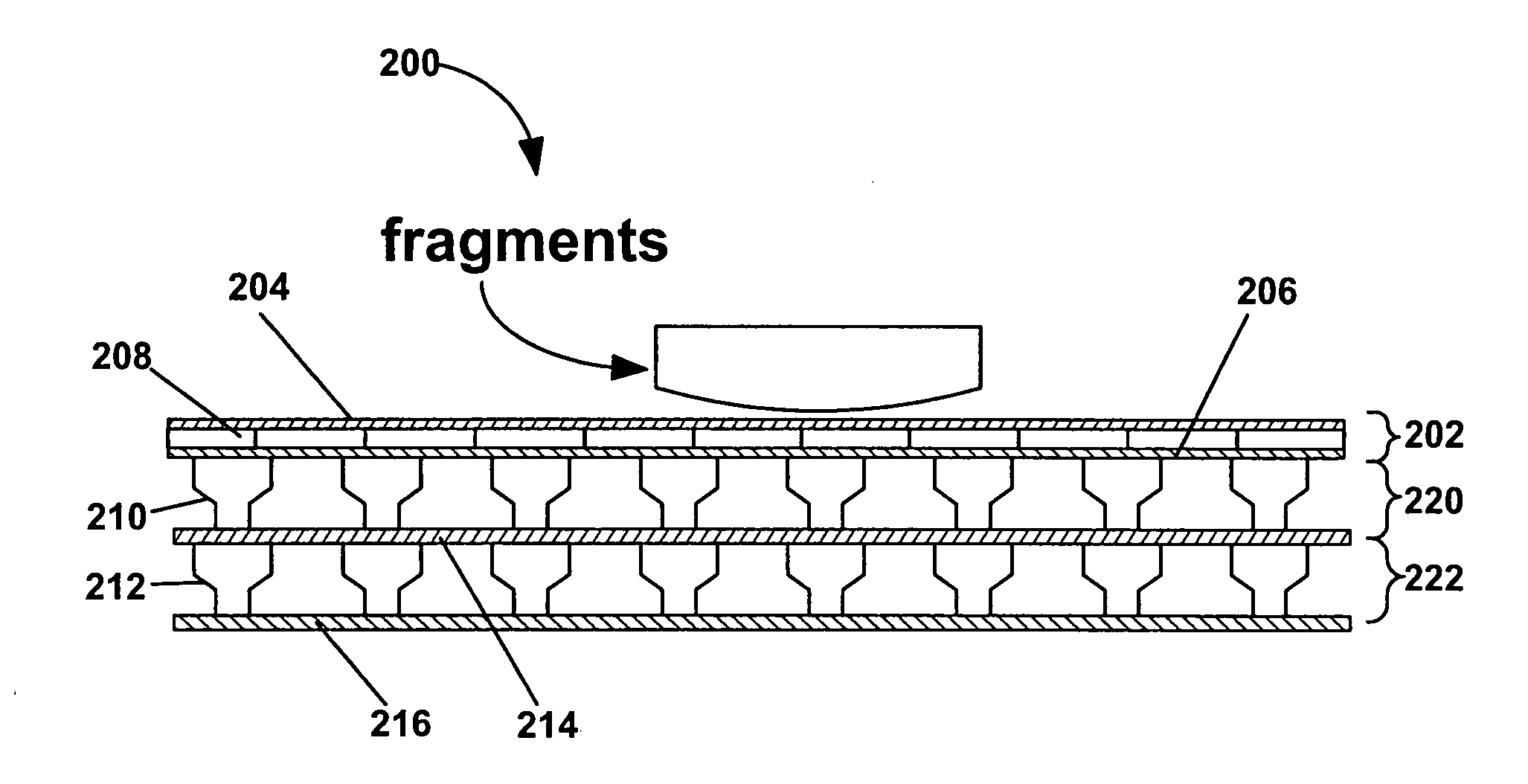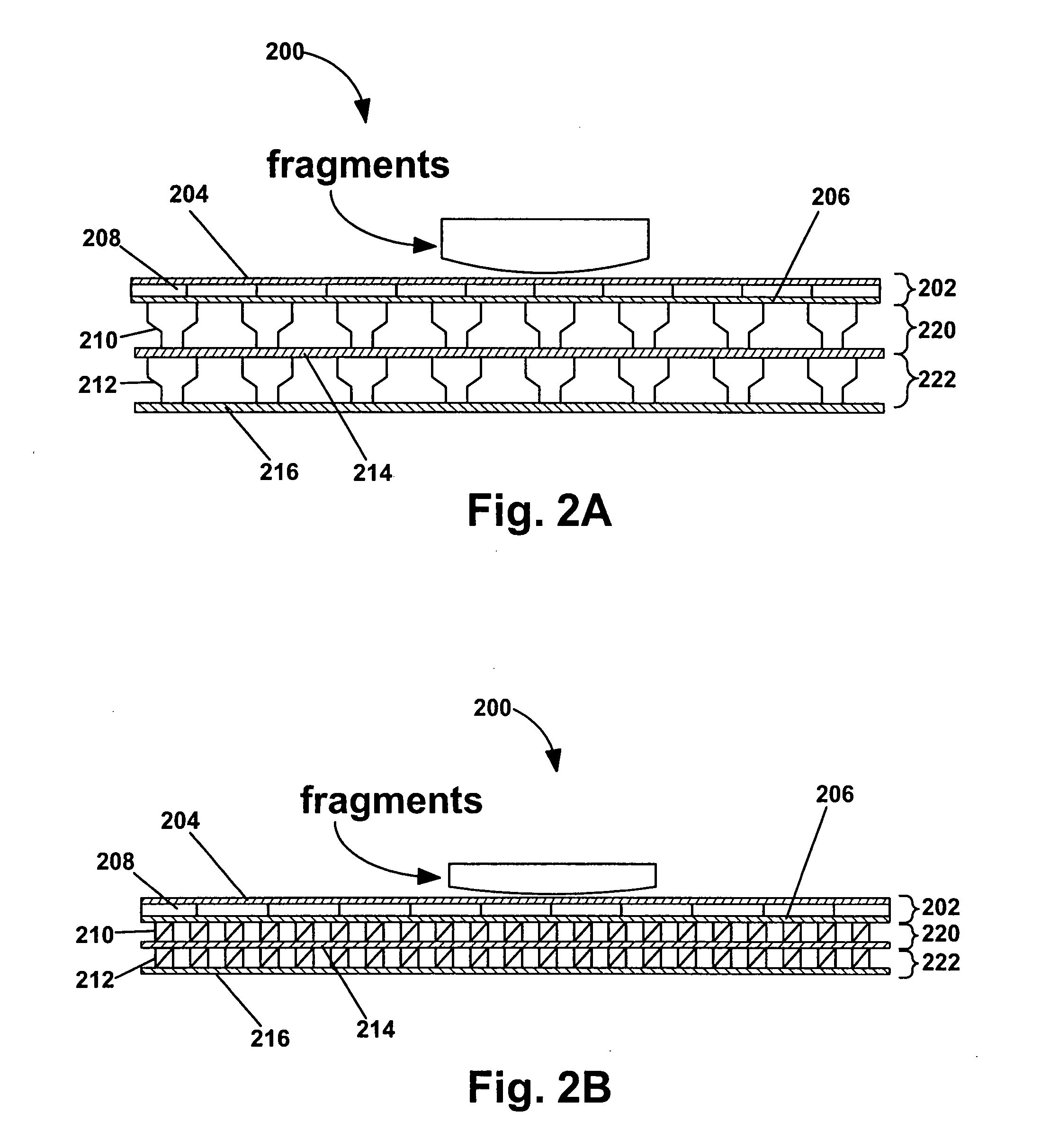Blast resistant composite panels for tactical shelters
- Summary
- Abstract
- Description
- Claims
- Application Information
AI Technical Summary
Benefits of technology
Problems solved by technology
Method used
Image
Examples
Embodiment Construction
[0015] The present invention relates to blast resistant panels. In one embodiment, the present invention relates to blast resistant panels that are designed for use in a tactical shelter. In another embodiment, to reduce the weight of a tactical shelter, a lightweight panel system is disclosed herein.
[0016] Various honeycomb types of sandwich structures with different facings have been used in the past in existing shelter systems (Department of Defense standard family of tactical shelters—2000). However, to date blast resistant panels have failed to yield satisfactory secondary fragmentation impact resistance since certain design criteria have not been considered. To address the problem of absorbing the secondary fragmentation energy, a new multilayer sandwich panel design is disclosed in the present invention.
[0017] In one embodiment of the present invention, a panel according to the present invention comprises at least three layers, with a frontmost layer (i.e., the layer on the...
PUM
 Login to View More
Login to View More Abstract
Description
Claims
Application Information
 Login to View More
Login to View More - R&D
- Intellectual Property
- Life Sciences
- Materials
- Tech Scout
- Unparalleled Data Quality
- Higher Quality Content
- 60% Fewer Hallucinations
Browse by: Latest US Patents, China's latest patents, Technical Efficacy Thesaurus, Application Domain, Technology Topic, Popular Technical Reports.
© 2025 PatSnap. All rights reserved.Legal|Privacy policy|Modern Slavery Act Transparency Statement|Sitemap|About US| Contact US: help@patsnap.com



